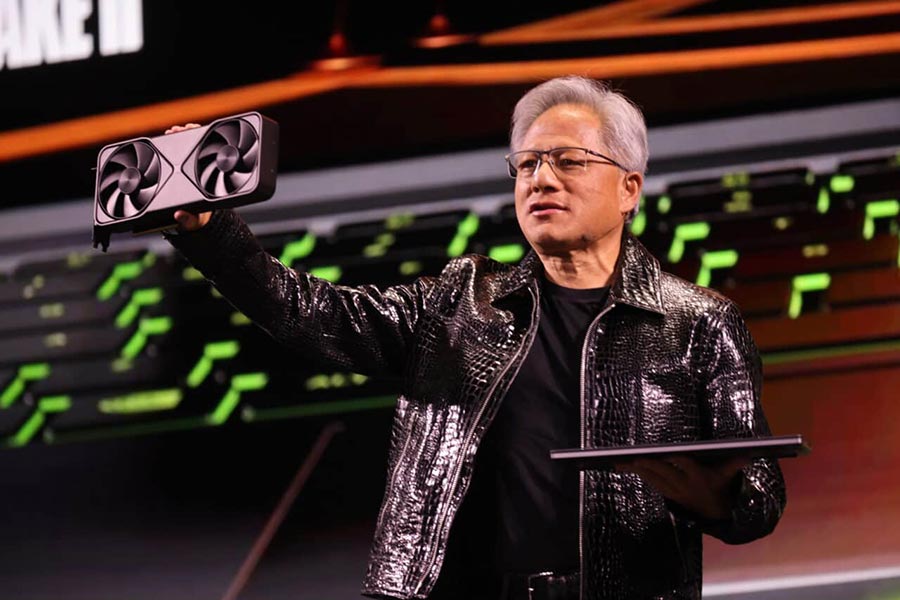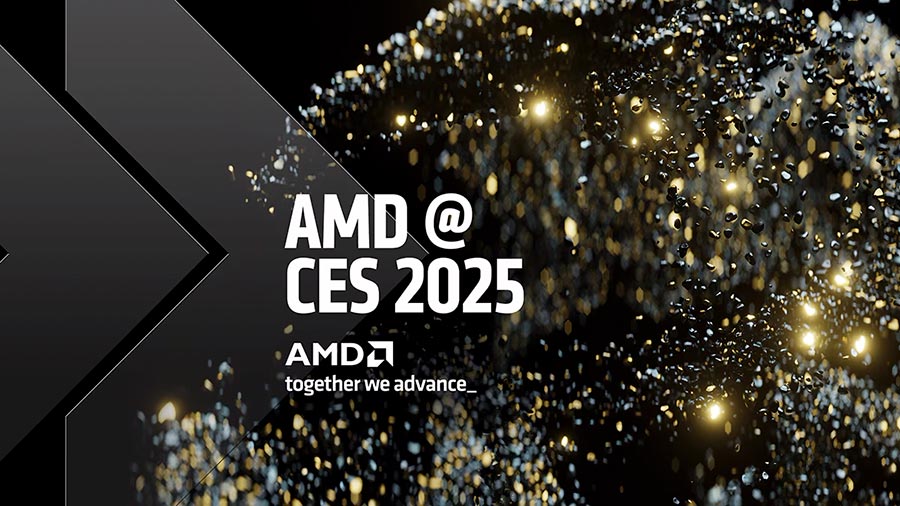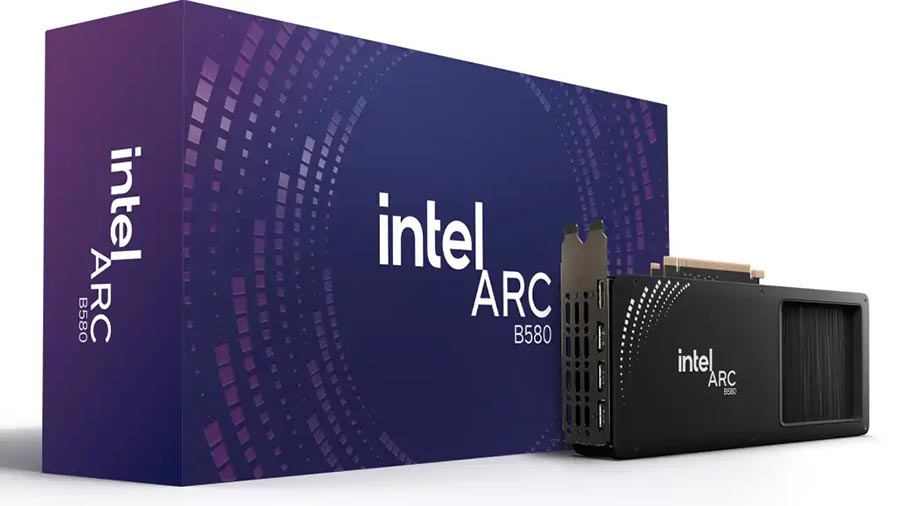The Consumer Electronics Show (CES) 2025 was an exciting event for gamers (a pun here for you), with both NVIDIA and AMD unveiling new and groundbreaking hardware. The tech groundbreaking nature of the event has always been said every year, but unlike previous years, this year’s showcase has firmly placed CPUs and GPUs front and center.
With NVIDIA and AMD unveiling next-gen hardware, CES is no longer just about the latest gadgets—it’s where the future of gaming hardware is being presented. From AI-powered graphics and hyper-efficient architectures, the announcements at CES 2025 are setting the tone for the next wave of gaming experiences. We’re going to present some of those “next wave” devices to you below.
NVIDIA’s Big Play: The GeForce RTX 5000 Series

We thought NVIDIA’s presence was interesting more on the product launches than their somewhat controversial keynote. The most interesting reveal was the introduction of NVIDIA’s highly anticipated GeForce RTX 5000 series of graphics cards. Building on the success of its previous generation, the RTX 5000 cards leverage NVIDIA’s latest Ada Lovelace architecture and the new DLSS 4.0 technology. All the bells and whistles a new generation is expected to carry.
GeForce RTX 5000 Series Bells and Whistles:
- DLSS 4.0 and Ray Tracing: Even so with our reservations about DLSS 4.0, it still marks a leap forward for the company, offering even faster upscaling and better visual quality than its predecessor. The addition of next-gen ray tracing cores means games will look more realistic, with intricate lighting, shadows, and reflections.
We are not as impressed with DLSS 4.0 with NVIDIA “moving the goal posts” of how one calculates framerates. Once upon a time DLSS was a bonus in adding fake frames to increase the apparent performance of a game, but now NVIDIA is tacking this onto their benchmarks by default, claiming “4090 level of performance” for their 5070 cards. We highly doubt this is the case without assuming DLSS 4.0 is involved. - Improved Frame Rates: With GPUs like the RTX 5090 and RTX 5080, NVIDIA claims that the RTX 5000 series is capable of delivering 4K gaming at ultra-settings with frame rates pushing beyond 150 FPS in demanding titles. This makes it a great choice for competitive gamers who demand high-refresh-rate displays over quality from those displays.
- Improved Power Efficiency: The RTX 5000 series is built on a more power-efficient process, meaning you won’t have to worry as much about power consumption or heat while running their GPUs at max settings. We at Events for Gamers expect the efficiency of these next-gen cards (including those from AMD) to be a huge benefit for laptop systems compared to previous years.
- AI-Driven Enhancements: NVIDIA’s continued focus on AI for gaming has led to improved game optimization, with real-time dynamic scaling ensuring smoother gameplay even in the most graphically intense scenarios.
“It started with perception AI — understanding images, words and sounds. Then generative AI — creating text, images and sound,” Huang said. Now, we’re entering the era of “physical AI, AI that can proceed, reason, plan and act.”
AMD’s Response: The Radeon RX 9000 Series and Ryzen 8000 Series

AMD has usually been the underdog of the GPU business world with prices lower (and generally performance) than their competitor we shall not name (because we already did somewhere else in this article…). AMD is never one to back down from a challenge though, and at CES 2025, the company unveiled its own suite of hardware to take on NVIDIA’s dominance in the GPU space. The Radeon RX 9000 series is poised to be a serious contender for gamers looking for high-performance, next-gen graphics at hopefully a more competitive price point.
“Proud of our new @Ryzen AI PC lineup that @JackMHuynh showed off at #CES2025! Lots of new systems from all of our partners!” said Lisa Su, on her X account @LisaSu.
Key Features of the Radeon RX 9000 Series:
- RDNA 4 Architecture: The RX 9000 series introduces RDNA 4, which offers substantial performance gains in both rasterization and ray tracing. The addition of Infinity Cache 2.0 boosts memory bandwidth and reduces latency, ensuring a faster and more responsive gaming experience.
- Enhanced Ray Tracing Performance: AMD has significantly improved ray tracing on its RX 9000 series, closing the gap between itself and NVIDIA in terms of visual realism. While NVIDIA remains the leader in ray tracing performance, AMD is narrowing that gap. They are providing you with more affordable alternatives without sacrificing too much in graphical quality. We’re excited with AMD’s ray tracing performance this generation.
- FidelityFX Super Resolution (FSR) 4.0: AMD’s answer to NVIDIA’s DLSS, FSR 4.0, has been upgraded to offer better image quality and faster performance. While it doesn’t leverage AI in the same way as NVIDIA’s tech, FSR 4.0 is an impressive tool for maintaining performance at higher resolutions like 4K and even 8K. A reminder though that like DLSS these companies are essentially inserting fake frames into the sequence and this comes with side effects.
- High Performance at Competitive Prices: AMD continues to position itself as the “value king” in the GPU market, offering impressive performance if who want excellent frame rates without paying the premium that NVIDIA often commands.
Ryzen 8000 Series CPUs: Powering the Next Generation of Gaming PCs
On the CPU front, AMD also made waves by revealing the Ryzen 8000 series processors, which are designed to complement its graphics cards and provide the necessary horsepower for next-gen gaming.
- Zen 5 Architecture: The Ryzen 8000 series is built on the Zen 5 architecture, delivering significant performance increases over previous generations. With improved IPC (instructions per cycle), faster clock speeds, and more cores, these processors are perfect for multitasking and CPU demanding games.
Some of the games that will benefit most from raw horsepower are Minecraft, Cities Skylines, and other simulation type of games. Also in the simulation camp, repetitive production type games like Factorio will get a huge boost from the X3D variants of these CPUs. The more cache onboard the CPU the better for games that output repeated items over and over. - AI and Gaming Optimization: AMD has introduced a suite of AI-driven features to its Ryzen 8000 CPUs, allowing for real-time game optimization based on workload demands. This ensures smoother gaming performance across a wider range of titles while maintaining system efficiency.
- Support for PCIe 5.0 and DDR5: PCIe 5.0 and DDR5 have been around for a while now and are ‘maturing’ as technologies. The Ryzen 8000 series supports PCIe 5.0 (usually AMD beats the competition here with supporting new tech), enabling faster data throughput between the CPU and GPU. Coupled with DDR5 memory support, you can expect smoother, more responsive gameplay across the board.
NVIDIA vs. AMD: A Battle for Gamers’ Hearts

- NVIDIA continues to dominate in the high-end GPU space with its RTX 5000 series, offering bleeding-edge ray tracing, AI-powered features like DLSS 4.0, and supreme performance. Its high-tier cards will undoubtedly appeal to anyone who demands the absolute best.
- AMD, on the other hand, is presenting an appealing alternative with its Radeon RX 9000 series, which is a better value proposition if who want great performance without breaking the bank. The Ryzen 8000 series also shows that AMD is serious about providing a holistic gaming experience with high-performance CPUs.
INTEL – THE NEXT UNDERDOG?

But wait, there’s more. Let’s not forget about Intel and its struggles to enter the GPU market these past few years with their Arc GPU architecture. Intel officially revealed the Arc B580 and B570 GPUs, codenamed ‘Battlemage’, this past month. There isn’t much to go on at the moment, but we are always rooting for the underdog of underdogs – a third participant in the competition ring is always a good thing after all.
Rumors suggest the B580 will be roughly 12% faster than the RTX 4060 and the B770 perhaps as fast as the RTX 4070.
Here’s crossing fingers these GPUs launch successfully sometime this year.
The Expense of Next-Gen Graphics: Is It Worth the Upgrade?
You may be wondering whether it’s worth it to upgrade their current hardware. The latest GeForce RTX 5000 series and Radeon RX 9000 series represent powerful leaps forward in performance, but they also come with hefty price tags. The top-tier RTX 5090 and RX 9000 XT models are pushing the boundaries of cost, with the potential to hit or exceed $2,000, making them a significant investment.
Being Practical
While these cards promise to deliver unmatched performance—whether you’re gaming in 4K, exploring virtual reality, or rendering demanding content—the question remains: Do you really need that level of power? For casual gamers or those with mid-range setups, the answer may not be clear cut.
If you have an older system—say, with a 1080 Ti or an RX 5700—might see noticeable performance improvements by opting for a mid-range card. NVIDIA is finally upgrading most cards in their 5XXX series stack with extra memory (except for the unfortunate 5070). Upgrading to something as powerful as the RTX 5090 may only be necessary for those gaming at ultra-high resolutions, multi-monitor setups, or those heavily invested in 4K or 8K gaming (but don’t do it for those CPU simulation demanding games… it’ll be a waste and may even hurt overall performance over, say, a 5070ti).
However, More Options The Merrier
On the other hand, with DLSS 4.0 and FSR 4.0, these new GPUs provide gamers with even more options to enhance performance, especially in graphically demanding games.
Ultimately, the decision to upgrade depends on your gaming needs and budget. If you’re a competitive esports player or a content creator working with 4K footage, the newest GPUs may well be worth it. However, for most of you who are happy with 1080p or 1440p performance, sticking with an older but still capable card could save you a lot of money while still providing a fantastic gaming experience.
In the end, both NVIDIA and AMD are delivering great options across the spectrum—from enthusiast-grade powerhouses to more budget-friendly options—giving gamers plenty of choices based on their needs.
For more from CES, check out our ‘The Three Biggest Takeaways From CES 2025‘ article.
Author: Mathew Anderson, CEO and Editor-in-Chief of Events for Gamers, Community Manager for the computer game industry (KingsIsle, Portalarium, Petroglyph), and Public Relations Manager and Communication Specialist for various other industries.
Disclaimer: All information acquired has been sourced from Nvidia, Intel, and AMD’s official website pages, or where linked back to from tech resources. Technical information and formatting done through various print programs. Quotes and any external commentary is sourced from their respective outlets. All other commentary and opinions are our own.



